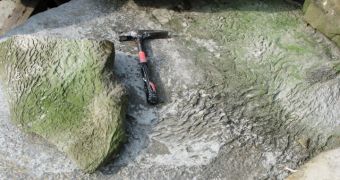While animals are a common presence all over the planet today, things weren't always set up this way. In fact, more than 550 million years ago, there were no animals to speak of. Researchers are now investigating how the earliest complex lifeforms came to be.
Scientists are now proposing that the first animals managed to endure the harsh conditions they developed in by associating themselves with microbial mats. These are structures produced by cyanobacteria coming together.
They are, in essence, slimy films that develop at a variety of locations, including around hydrothermal vents, around geysers, in volcanic calderas and so on. Despite their nature, experts say that they might have been indispensable for the development of complex life here on Earth.
According to biologists, these structures were capable of producing some amounts of oxygen, which would have literally come as a breath of fresh air at a time when the planet's atmosphere did not contain too much oxygen.
At the same time, they may have also constituted a source of food for the first mobile animals ever to develop. Before these creatures, the predominant lifeforms were static, or barely able to move over short distances, Wired reports.
The conclusions belong to a new scientific study, which was put together by an internatiopnal collaboration of researchers. Details of the work appear in the May 15 online issue of the esteemed journal Nature Geoscience.
According to the fossil record, the first so-called wriggling animals emerged some 555 million years ago. At that time, the planet's atmosphere had only one tenth the amount of oxygen it does today. Studies have established a direct correlation between oxygen concentrations and animals size.
In these scenarios, “biomats provided the oxygen that ironically enabled the animals to better exploit biomats as food,” explains Murray Gingras, a coauthor of the new investigation. He holds an appointment at the University of Alberta in Edmonton.
The earliest animals “were eating the biological material, and they were using it as a scuba tank at the same time,” he goes on to say. The expert and his team conducted a series of drills in a frozen Canadian pond in order to arrive at these conclusions.

 14 DAY TRIAL //
14 DAY TRIAL //